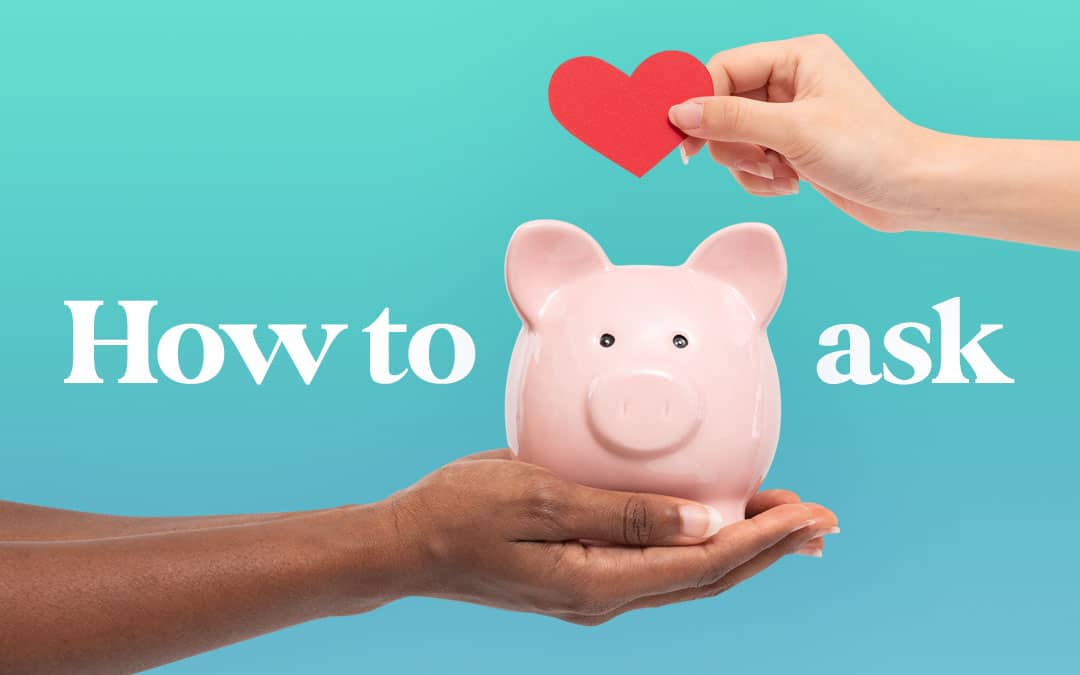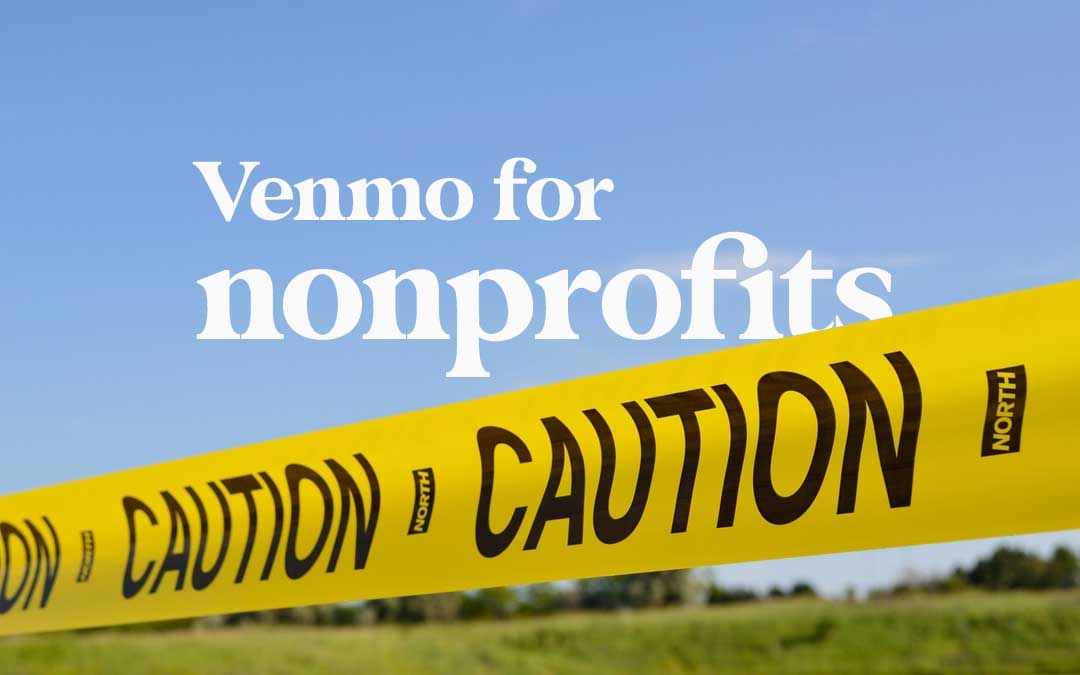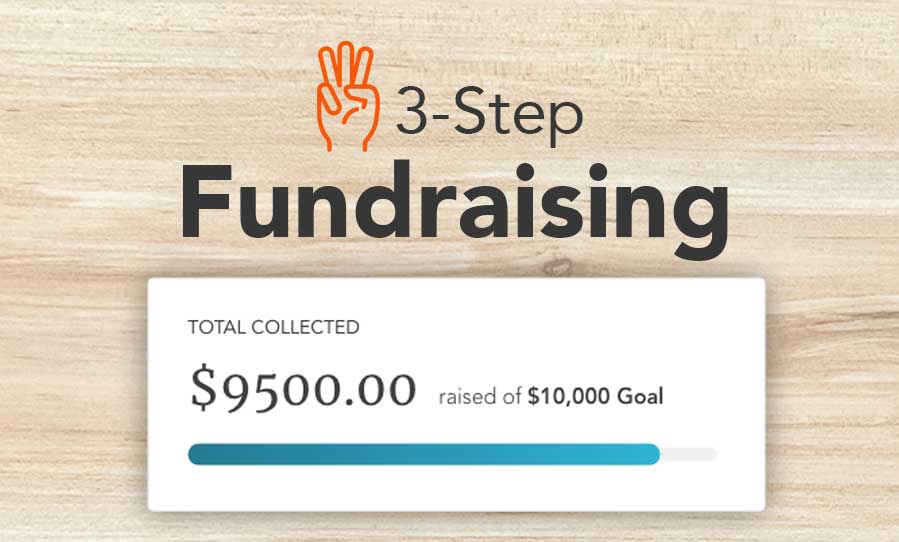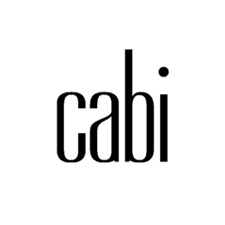Planning a fundraiser is often the easy part — it’s how to ask for donations that often leaves people mystified, especially if you’re a team of volunteers who haven’t before.
The bottom line: “It’s not rocket science; it’s relationship stuff,” says David Goodwin, a senior regional philanthropy officer with American Red Cross, who has served in a number of fundraising roles, from higher education to nonprofit boards. “Dollars get attached, and it gets intimidating, but it’s really about willingness to support people you care about.”
Take note of this professional fundraiser’s key tips for raising money for your group — as well as our very own Cheddar Up insights about what drives the highest dollar amounts. You can also follow along with you own planning worksheet.
How to ask for donations
While the context and audience may change, this process can apply to generally any fundraiser.
1. Master your mission.
Before you begin any campaign, you have to understand the foundational “why” — so that you can translate that purpose and passion to others. Why do you want to ask parents for classroom donations? Because math manipulatives help your children grasp math concepts and the cost often comes out of a teacher’s paycheck, which means they can’t compile a full class set quickly.
Why join the PTA?
Because the PTA funds and organizes the activities your students participate in. Extracurricular programming enhances the school day and motivates kids to be present.
Why is supporting the Girl Scouts a worthy cause?
Why does the Miracle League need more support?
Why is your nonprofit essential to the community?
And so on. “Can you pull together the idea of why someone should support the program?” Goodwin asks. That’s where you start.
2. Make a list
Professionally, it’s called “prospecting”. Start with people you know, then others who might have some investment in your cause. If you’re hosting a sports team fundraiser, for example, the latter could be alumni, parents of alumni, or fans who regularly attend. Look at your group’s past fundraisers, and add the names of everyone who contributed.
The relationship is key to connection: “Cold calls are really, really hard,” Goodwin says. Go with the people you know; it’s less daunting.
It’s not rocket science; it’s relationship stuff… Dollars get attached, and it gets intimidating, but it’s really about willingness to support people you care about.
3. Make a script
Writing out what to say can make fundraising less intimidating. Provide as many specifics as possible — it adds legitimacy to your cause. Consider this framework for how to ask for donations:
“Hi [FIRST NAME] — I’m a [TITLE/POSITION] with [GROUP NAME], and we’re currently raising money for [CAMPAIGN]. This is important because [THE WHY]. It will cost [COST BREAKDOWN]. I’m hoping to find [# OF PEOPLE] to donate at least [MINIMAL AMOUNT] by [DATE]. Would you consider donating?”
SEE IT IN ACTION:
Hi Sally,
I’m the team mom for the JMS volleyball team, and we’re currently raising money for new uniforms. We don’t have enough for the entire team to participate in matches, and unfortunately we can’t mix and match due to regulations. Volleyball has been such an important aspect of my daughter Kayla adjusting to our move, and I want to make sure she and her friends can continue to play!
The uniforms will cost about $50.00 per player, and I’m hoping to find two supporters for each player by next Friday. Would you consider giving?
Hi Blake,
I’m the treasurer for the WES PTA, and we’re currently raising support for our enrichment program. It’s a big deal because it gives our kids hands-on learning, as well as working parents an extended option. For that reason, we’d love to keep it as low-cost as possible, potentially even offering zero-cost scholarships. I’d love to find 10 people to give at least $25 by October 10. Would you consider?
You can adjust this whether you’re asking in person, making phone calls, or sending notes. The important thing to remember is: The magic isn’t in what you say, but how you say it. People often want to rally around a person or group they care about, Goodwin says.
4. Make a plan
The three main planning components for how to ask for donations: How, when, and how many.
HOW:
What will be your method(s) of outreach? Goodwin recommends in-person conversations and phone calls — remember, your list likely consists of people you know well and see regularly — because “you want that personal interaction,” but he acknowledges that “it can be hard to get people on the phone.”
We at Cheddar Up also acknowledge that if you’re here, you likely want to go paperless, but sometimes a letter fits the bill. “We all get SO MUCH email that it’s tough to cut through the clutter,” Goodwin says. Letters, on the other hand, are a surprise — and a tangible reminder.
WHEN:
Think not just about the dates of your fundraiser, but also the dates of any outreach activities. This could include a letter-writing party, a call-a-thon, or any other outreach activity.
One of Goodwin’s “little tricks” is to “do something social. A few moms and a few dads come together, get fired up, each take a few names, and spread out to make calls,” he suggests. “Let’s knock this out in one night.” It helps because “you don’t feel like you’re alone.” If you’re writing fundraising letters, have a letter-writing party, complete with snacks.
HOW MANY:
One of the biggest pitfalls to fundraising, Goodwin says, is making it “too big that people can’t see success.” Make lists manageable — like 10 phone calls per person, not 50.
5. Ask!
That old adage is cliche because it’s true: You never know unless you ask.
6. Follow Up
If someone misses your call, send them a message. If someone hasn’t responded to your letter, give them a call. Life is busy (don’t we group organizers know!) and sometimes things get overlooked. Goodwin suggests giving someone two to three chances to make a gift — if they haven’t responded after three in a calendar year, it’s OK to drop them from your list.
How to ask for donations online
The above tips apply to any fundraiser, no matter how you’re collecting donations. Online payments are simply a payment method, not an outreach method — having a convenient way to pay doesn’t replace letting people know about your campaign.
However, Cheddar Up does have some features and best practices to enhance your efforts.
1. Include your link and/or QR code in all communications.
Making phone calls? Offer to send donors your collection’s URL via text message as soon as you end the call. Sending letters? Put your collection’s unique QR code under your signature, and all people have to do is point their phone’s camera at it to get to your donation page.
2. Offer “Any Amount” or recurring donations.
Based on data from Cheddar Up fundraising collections, open donations raise 45% more than fixed donations. Set this by choosing “Any Amount” when adding an item to your collection. Also considerrecurring donations, as they raise even more and can help funds come in throughout the year.
3. Consider wording carefully.
Our collection data also shows us the power of wording. Take a look at the average amount received PER PERSON when the following words and phrases were used in the Collection Details (the first step in setting up your collection).
Word or
phrase used
“Level”
“Tax Deductible”
“Goal”
“Generous”
“Thank You”
“Minimum”
“Any Amount”
“Suggest”
“Appreciate”
“Suggested Amount”
“Thanks”
“Suggested Donation”
“Recommend”
average
donation
$125.09
$100.44
$82.89
$76.10
$72.00
$70.79
$62.00
$61.19
$59.96
$56.90
$56.89
$54.44
$50.40
4. Use our reporting center to build your list.
Your reporting dashboard keeps record of your group’s entire Cheddar Up history. Filter through your past collections, and add those payers to your reachout list. If they supported your organization once, they may be willing to do so again. With a Pro plan, you can also set up a visitor’s report that logs everyone who has viewed your collection — add them to the list too!
In short, before you go
Fundraising is about connections — to your cause, and to your community. Before you begin, know why your cause matters, know who to ask, know what to say. Make the process fun and manageable, and enhance it with Cheddar Up’s savvy features.
Ready to roll
Now that you know how to ask for donations, we created a free downloadable worksheet to help you put these tips into action.









